All About Walking Feet & Dual Feed
A detailed breakdown of the walking foot and the concept of dual feed: entry level walking foot vs Bernina's built-in dual feed vs Janome's AcuFeed Flex System
Greetings everybody,
In this edition of The Sewing Machine Newsletter , my goal is to do a deep dive on walking feet and the concept of dual feed.
I hope you find it helpful.
-Cale
Why use a walking foot in the first place?
As a sewing machine sews, it feeds the fabric forward a designated length of space between each stitch— stitch-feed-stitch-feed-stitch-feed.
The presser foot holds the fabric down against the gripped feed teeth (also known as feed dogs) which are positioned below the needle plate. As the needle goes up out of the fabric, the feed dogs rise just above the needle plate surface and move to feed the fabric forward. When the needle goes back down into the fabric to make the next stitch, the feed dogs disappear momentarily below the needle plate.
And so it goes… stitch-feed-stitch-feed-stitch-feed.
When we use a sewing machine, we are typically sewing multiple layers of fabric together. The feed dogs only make contact with the bottom layer of fabric, not the top layer. Because the bottom layer of fabric is in contact with the gripped feed teeth and the top layer is not, a potential problem arises: the bottom layer of fabric may feed at a slightly different rate than the top layer. I've heard many people, particularly quilters, refer to this problem as slippage.
In essence, a walking foot is a presser foot with gripped feed teeth— gripped teeth that make contact with the top layer of fabric. The basic idea is that you can combat slippage and achieve a more even feed between multiple fabric layers by using a walking foot because you essentially have feed dogs that are feeding both the top layer of fabric and bottom of layer of fabric— also known as dual feed.
Basic Walking Foot
The photo below shows the basic walking foot you'll find on nearly every machine that costs less than $1,500:
There are a few things I want to point out.
First, notice how the walking foot has a lever that goes around the needle bar set screw. The walking foot is designed like this because the movement of needle bar moving up and down that causes the action of the walking foot’s gripped feed teeth. In other words, the walking foot reacts to the needle movement, which is fine, but not ideal. Better walking feet exist, and they are better because their design is superior.
The second thing I want you to notice is the gripped feed teeth on the walking foot itself:
The teeth are made of plastic. Again, this is fine, but not ideal. Better walking feet exist, and they are made of higher quality materials.
Janome's "AcuFeed" Dual Feed Foot
Janome calls this walking foot the AcuFeed Flex System and I would argue that it is the best-performing walking foot in the world.
As you can see in the photo above, there is no lever that goes around the needle bar screw, meaning that, unlike the entry-level walking foot, the action of the walking foot's gripped feed teeth is not dependent on the movement of the needle bar.
That begs the question-- how does the walking foot's gripped teeth move?
As you can see in the photo above, the Janome AcuFeed walking foot hooks into a mechanism in the back of the machine. Remember the old song about the thigh bone connects to the knee bone, the knee bone connects to the shin bone, and so on? The same principle applies here. The walking foot is hooked into a mechanism that connects it to the upper shaft of the machine. The upper shaft is connected to the motor belt and the motor belt is connected to the lower shaft. And guess what the lower shaft is connected to? The machine’s feed dog mechanism.
I point this out because this unison of movement gives Janome’s Acufeed walking foot the distinction of integrated dual feed. Because the AcuFeed foot is directly hooked into the machine’s critical internal components, the gripped feed teeth operate completely in sync with the machine's feed dogs, which helps deliver a more perfect even feed than a basic entry-level walking foot.
Not only does it help prevent slippage, not only does it deliver a more even feed when sewing multiple layers of fabric, it does a third thing that is really unique.
A machine that is compatible with Janome's AcuFeed walking foot will have a knob on the right side of the machine that allows you to adjust the feeding ratio between the Acufeed walking foot and the feed dogs. This ability to adjust the feeding ratio is what we call differential feed. Most of you will be familiar with sergers, which are particularly suited for sewing knits. One reason they are well-suitrd for knits is because they are designed with two sets of feed dogs below the needle plate and the ability to adjust the feed ratio between the two feed dogs.
Until Janome invented the AcuFeed walking foot, sewing machines were not capable of differential feed. Now they are. It’s a true evolution in the capabilities of sewing machines, and I expect other manufacturers to follow their lead.
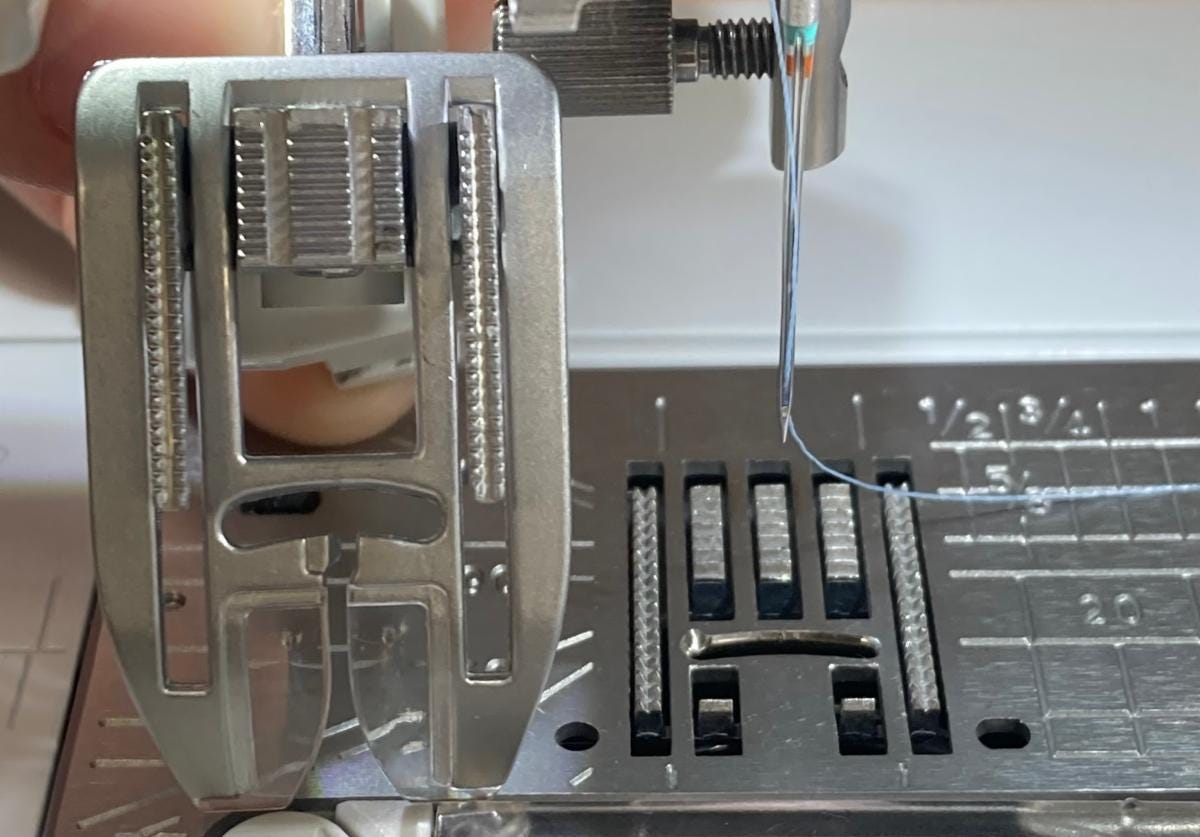
As you can probably tell, I love Janome's AcuFeed walking foot. I am huge fan, both as a sewing machine nerd, and as someone who has met literally hundreds of sewists who love it.
What I love even more is that you don't have to buy Janome’s top-of-the-line machine to get this special walking foot. While they put the AcuFeed walking foot on their $15,000 Continental M17 super-machine, they also put it on the Skyline S6, which costs ~$1,500 new.
Bernina's Built-in Dual Feed
Bernina has an integrated walking foot of their own, which is commonly known as "built-in dual feed."

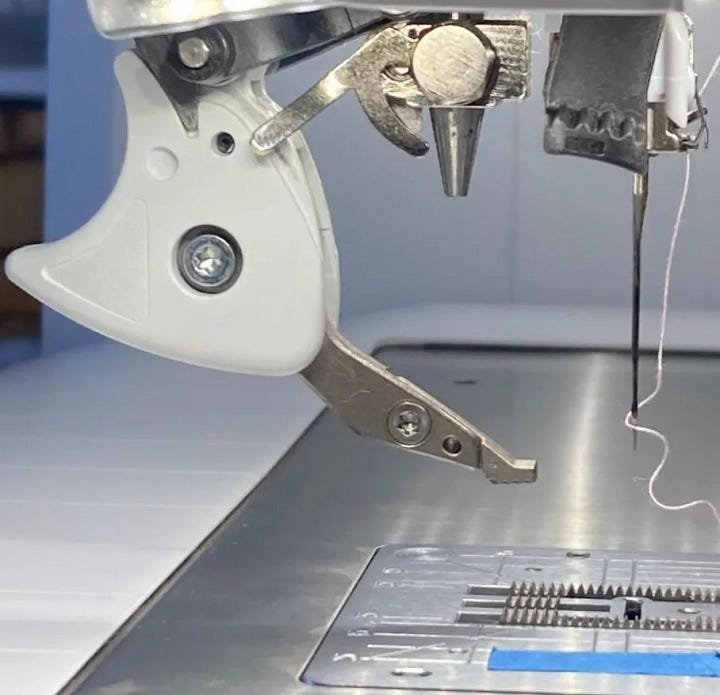
As the name implies, this version of a walking foot is built into the machine. The benefit of this design is that it is super easy to engage the walking foot. All you have to do is pull the dual feed down into the presser foot and you’re ready to go.
Those of you who have used the traditional style walking feet before will know it can be a bit of a pain to remove the entire presser foot and ankle, then have to screw on the walking foot while also getting that lever around the needle screw bar. With Bernina's built-in dual feed, you won't have to pull out a screwdriver to put it on and take it off. There is no struggling to get the walking foot lever over the needle screw. You simply pull down the dual feed to engage it, and you push it back up to disengage it.
Similar to Janome's AcuFeed system, Bernina's built-in walking foot also meets the criteria to be classified as integrated dual feed. It does not have as many gripped feed teeth as the Janome walking foot, but the teeth are also made of metal and overall it performs extremely well.
Another unique thing about Bernina's built-in dual feed is that it is compatible with a ton of different feet. If you see a Bernina presser foot with the letter 'D' after the number, that means it is compatible with the built-in dual feed.
The one downside of Bernina’s built-in dual feed is that the machines that have it are rather expensive. As far as I’m aware, at the time I write this newsletter the least expensive Bernina machine that offers built-in dual feed is the B570, which sells for around $4,000.
If someone wants a quality machine with built-in dual feed, but does not want to spend thousands of dollars, they should consider a pre-owned Bernina or a vintage Pfaff machine from 80’s/90’s/early 2000’s— e.g. 7550, 2140, 2022, etc.
“Tractor-Style” Walking Foot from Baby Lock & Brother
Top-of-the-line machines from Baby Lock and Brother have a special “tractor" style walking foot that is rather unique. Instead of the walking foot having gripped feed teeth, it has this rubber belt that pulls the top layer of fabric in order to achieve an even feed.
It’s a unique design and a bit more bulky than the other dual feed systems discussed so far, but I know a lot of people who use this tractor-style walking foot and like it a lot.
Thank you for reading. I hope you found this information helpful.
I’d love to hear about what types of walking feet you like or dislike in the comments, your experience with different dual feed systems, or any other input or questions you might have.
Also, if you like what you see, please feel free to share with any sewists you know.
Thank you,
-Cale




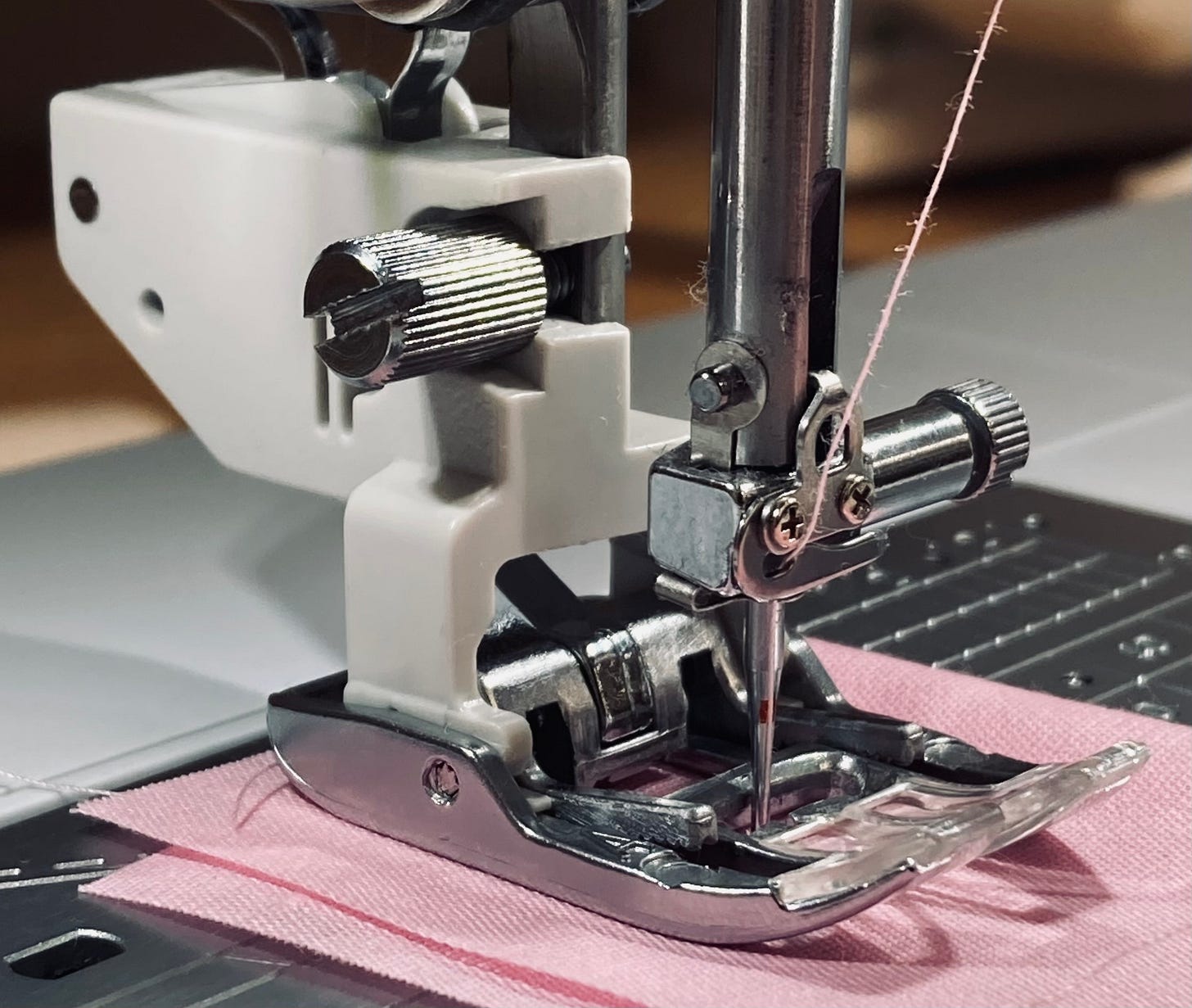
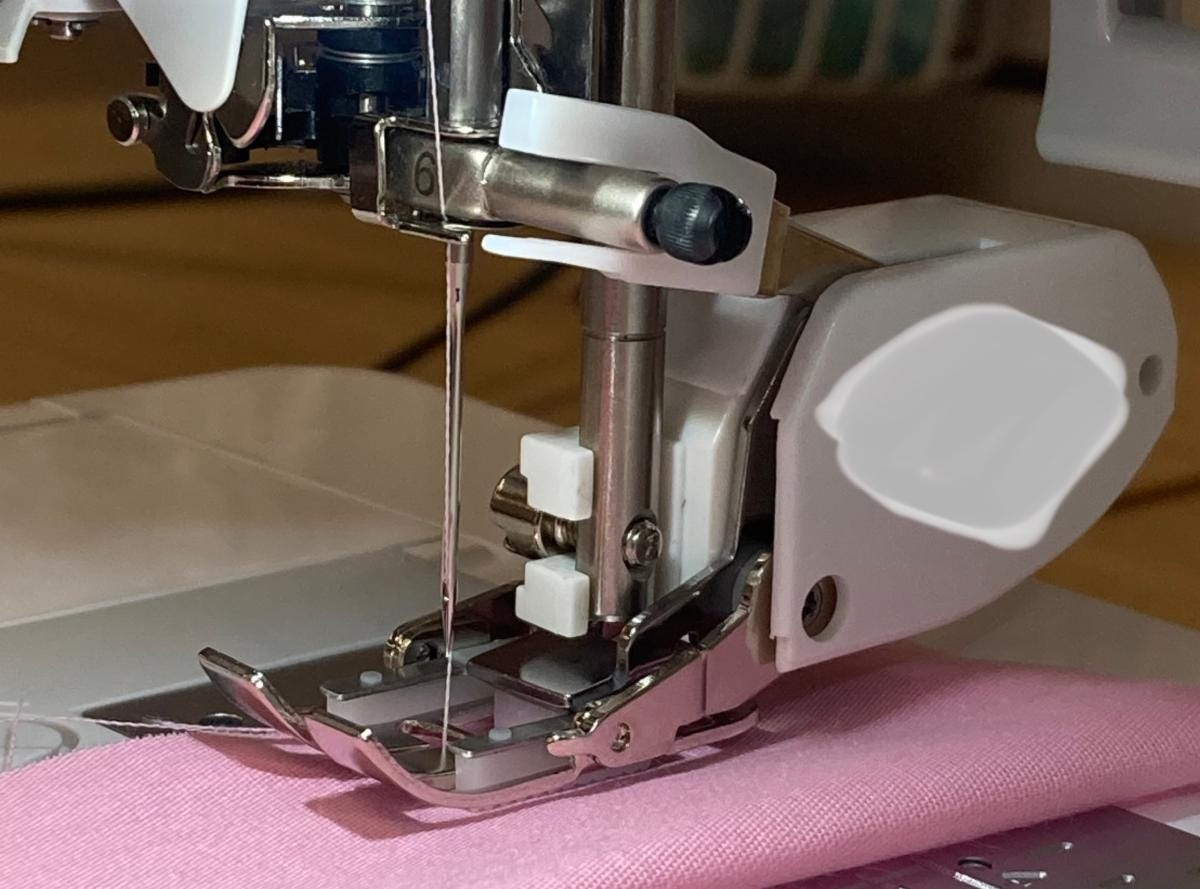
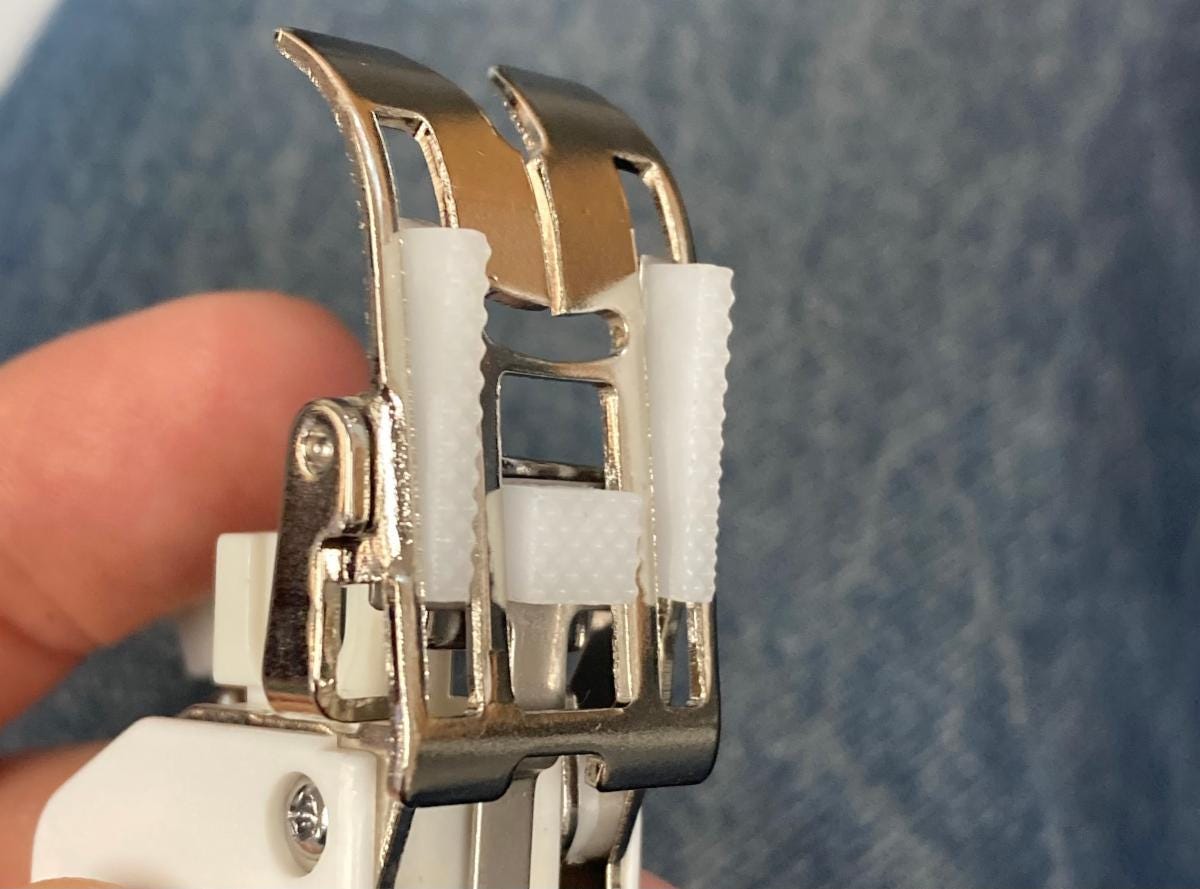
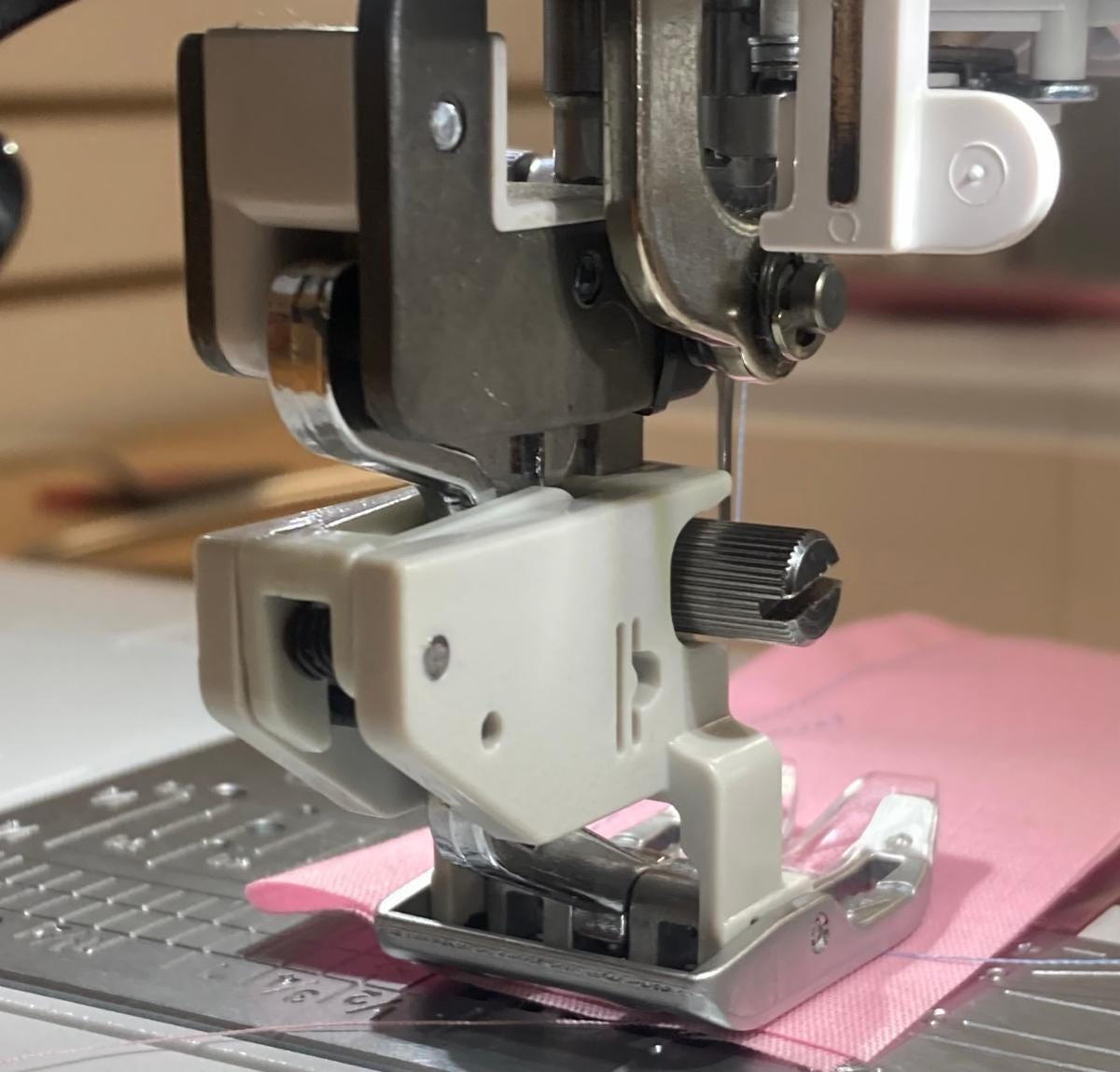
What about Pfaff? They pioneered built in walking foot (IDF) and Bernina just added it to their higher machines several years ago.
I really like your columns! This one about walking feet was very good! Unfortunately, I just have the generic foot that has to be screwed on, which is a real pain, but I'm not in the market for any new machine. I'm still learning the last one I bought! BTW, I'm a subscriber and I always spread the word about you to my sewing and quilting buddies. Keep up the good work!!!